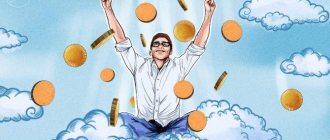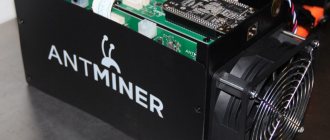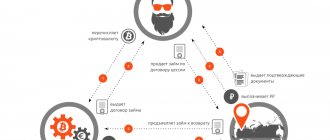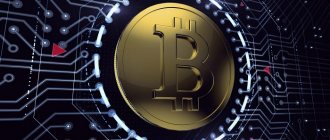Why do you need NFT?
Blockchain technology served as the basis for the creation of a digital analogue of money—cryptocurrencies. Later, substitutes for securities—tokens—appeared on the basis of cryptocurrencies. The next step was the digitization of all other real-world goods. Non-fungible tokens allow the creation of such digital goods.
You may come across different names for these tokens - non-fungible tokens, NFT, Non-fungible token. These terms are equivalent.
Tokens, like all goods, are divided into two types: fungible and non-fungible. If a product can be easily replaced with another of the same kind, then it is interchangeable. The already mentioned money and securities belong to this type. However, it is often difficult to find an equivalent analogue for a product, in which case it is called non-fungible. This is, for example, a country house, a work of art or a trademark.
Non-fungible tokens are different from each other, just like non-fungible goods in the real world. If one Bitcoin is no different from another Bitcoin, then each NFT is unique. This property allows information about any real-world object to be represented in the blockchain.
Examples of interchangeable and non-fungible goods
Why are NFT tokens needed? Every Internet user has a huge number of digital things: photos, videos, game items, documents in the cloud. But no one truly owns them. Photos on Instagram are managed by Facebook Inc, which can delete them at any time. Weapons are sold in Counter-Strike, but Valve Software reserves the right to change or remove weapons. A non-fungible token secures the user's right to own digital goods.
A non-fungible token is a tag that stores a link to any product. If you have a token, you own the product that is described in it. No token, no ownership. Thus, NFT weapons in the game will be sent to the player’s crypto wallet and the developer will no longer have any control over it.
The second important difference between NFTs and other digital goods is the ability to control them. If you sell weapons from Counter-Strike through an ad, it is almost impossible to guarantee the integrity of such a transaction without intermediaries. Trading a Non-fungible token is as easy as trading a cryptocurrency, so a tokenized item is easier to sell and buy.
Any thing can be represented as a token - a barrel of oil, a bottle of wine, a T-shirt, a piece of music, a gaming item, and even cryptocurrency. Tokenized items acquire new, unique properties that change the relationship between buyers and sellers.
In Russia they created an augmented reality quest game Bitcomon Go
08/02/2017 Lena Jess
#Bitcomon Go#games#applications#Russia#startups
At the end of July, at the Pokemon Go festival in the British city of Chester, a team of Russian developers presented the quest game Bitcomon Go, which, unlike its famous counterpart, allows you to complete microtasks in augmented reality and receive cryptocurrency for it. The application prototype can already be downloaded from Google Play. ForkLog magazine spoke with one of the creators of Bitcomon Go, Sergei Popov, about the details of the development.
ForkLog: Hello, Sergey. Tell us how the idea of creating the Bitcomon Go game came about.
Sergey Popov: In my opinion, the time has come for truly high-quality ideas. We present one of the few projects that have a ready-made working prototype. And despite the fact that the idea was on the surface, in our game everything is much deeper - we want to blur the boundaries between play and work.
If hundreds of millions of players around the world catch animals without any reward, then we can do something practical for the real world and replace the animals with real crypto money. We really want our game to promote the idea of cryptocurrencies to the masses and popularize Bitcoin and Ethereum.
FL: How will this be implemented in the application?
S.P.: The player creates an account, which in practice is a multi-currency wallet. Initially, the monetary component itself in Bitcomon Go represents a reward for some work performed. The game will be based on a system of microtasks linked to geolocation. So far we are developing six use cases:
1. The ability to create temporary jobs for remuneration. For example, a kind of courier service in which you need to deliver something for money. 2. Fitness trainers - set a goal, achieved it and received money. Such a sports application can be used in competitions; it can be linked to fitness bracelets. 3. Advertising - the advertiser scattered money around the city in the right places and people watch and collect money. This will allow for large-scale advertising campaigns. 4. Events - the event organizer scattered money, gave a task, people received money. 5. Competitions and competitions - whoever is faster will receive money. 6. Games with tasks like Minecraft.
In addition, we will allow users to create their own tasks and microtasks. But at the same time, we will strictly monitor incorrect assignments and abuses. The game will have age restrictions, a KYC policy, and mandatory user identification.
FL: Does the player receive any guarantees?
S.P.: We assume that at the moment the player receives the task, some amount in the “employer’s” account will be frozen to guarantee payment. After receiving the money, the player will be able to exchange it or cash out.
We are the only project that creates its own economy within the application. It is impossible to make such a game using ordinary fiat money, since this requires overcoming many bureaucratic barriers to obtain licenses and organize the entire process. In addition, cryptocurrencies do not have as many restrictions as fiat.
FL: You call your project a “legal startup”. What do you mean by this concept?
S.P.: The reward logic is initially written in a smart contract on Ethereum. In order to simplify the creation of tasks, we want to make an add-on for Ethereum - a kind of graphical interface, where instead of code, the user will operate entire blocks of code “Cubes”.
Ideally, we would like to develop a graphical user-friendly interface that would be used to create Ethereum smart contracts in various industries, including international trade.
FL: How many people were involved in the development of Bitcomon Go?
S.P.: So far we have five people on the team. I am a CEO with 15 years of experience in multinational companies, Director of Operations with 20 years of experience in international trade, Unity programmer, Solidity programmer and international criminal lawyer. We are currently looking for game scriptwriters, JavaScript programmers, Unity programmers, iOS and Android programmers to join our team. We are also looking for Advisors with name and experience in the gaming industry for the project.
FL: How do you intend to develop the application in the future?
S.P.: This summer we are planning to hold an ICO - the whitepaper has already been published. A month ago, we opened the company Cubus Pte.Ltd specifically for our startup. in Singapore. We are one of the few projects that plan to use the tokens issued at the ICO inside the application and trade them on exchanges. There are also plans to create real markets within the game for the exchange of cryptocurrencies, artifacts and other in-game assets.
Subscribe to Forklog news on Telegram!
Found an error in the text? Select it and press CTRL+ENTER
NFT tokens: what are they?
Most non-fungible tokens are issued on the Ethereum blockchain in two main standards:
- ERC-721 is an older standard. In it, each type of token requires a separate smart contract;
- ERC-1155 is an improved standard that allows you to work with several types of tokens at once through one smart contract. Standardizing the issuance of NFTs ensures a higher degree of interoperability (the ability of blockchains to communicate with each other), allowing such non-fungible tokens to be transferred between different decentralized applications.
- ERC-998 is a new emerging standard that allows for the creation of “composite” tokens—a digital asset that “owns” another digital asset. That is, within the framework of the ERC-998 standard, it will be possible to attach another token to one NFT. For example, the rights to own a game character in a computer game are represented by one non-fungible token, and the rights to their equipment are represented by another. ERC-998 allows you to combine them into one token.
- In addition to Ethereum standards, there are also Non-fungible tokens on the NEO, EOS, TRON, FLOW and COSMOS blockchains.
StormX
Available on Android, iOS
StormX is a mobile game where you complete a variety of micro-tasks in exchange for cryptocurrency. When using it, you can earn not only bitcoins, but also Ethereum, Litecoin, Dai and StormX tokens.
You can collect coins by completing simple tasks such as completing surveys, watching videos, downloading apps, playing games, and shopping in stores. Once you have accumulated new funds, you can withdraw your coins to your external crypto wallet.
After completing the task, you will be rewarded with “bolts”, which can be converted into one of the five cryptocurrencies listed above.
If you want to play games on your phone and earn some cryptocurrency, then feel free to try the Bitcoin games that we talked about in our article.
How to use an NFT token?
NFTs allow you to convert any digital asset into tokens. As a result, several new markets are now emerging, such as collectible tokens, in-game items, and digital art. Let's look at these markets in more detail.
Collectible tokens. In 2022, the first mass use of NFTs occurred in the crypto market as part of the Ethereum game CryptoKitties. Users were encouraged to breed and collect blockchain cats, which existed in the form of non-fungible tokens. For any action, the player must pay ETH, thus the developers’ earnings are generated from gaming commissions.
At the end of 2022, there was a huge hype around CryptoKitties: users were willing to pay tens of thousands of dollars for cats, and the game took up 15% of Ethereum traffic, severely overloading the network. But the hype quickly passed. Now CryptoKitties has several hundred new users every day (versus 15,000 people at its peak), and most kitties cost just a couple of cents, instead of hundreds of thousands of dollars (the most expensive crypto kitty was sold for 600 ETH, or $170,000 at the then exchange rate).
Crypto Kitties from Crypto Kitties
Fan tokens. CryptoKitties have spawned a wave of NFT trading cards: digital assets bearing the names of athletes, artists, and their unique likeness. Fan tokens are the most actively developed, allowing fans to collect cards of top athletes or participate in the life of their favorite club.
Moreover, startups such as Chiliz, Sorare and Socios are creating an entire infrastructure of football club tokens. The clubs Barcelona, Atlético Madrid, Paris Saint-Germain, Juventus, West Ham United, Galatasaray and Roma, among others, already have such tokens.
Image of Kylian Mbappé's NFT card on the Sorare platform, allowing
for football fans to collect and trade digital cards in the form of non-fungible tokens, assembling a “dream team”.
Digital art. Today, a significant part of the Non-fungible token is also used to confirm ownership, in particular for digital art. Moreover, most works in the format of such tokens are sold on specialized art platforms: SuperRare, Known Origin, MakersPlace, Rare Art Labs.
An image of the painting "New York Skyline", which was sold on the digital art platform Nifty Gateway. The work was commissioned by Morgan Creek Digital co-founders Anthony Pompliano and Jason Williams, and a portion of the proceeds will be donated to the Food Bank For New York City, an independent non-profit organization that provides free meals to residents. The author of the painting is 17-year-old artist Fevos from Las Vegas.
Computer games. In-game items in the form of Non-fungible tokens will allow gamers to truly own them without depending on the video game developers. This could significantly change the gaming industry: thanks to NFTs, users can transfer their trophies, achievements, and even ratings from one game to another. At the same time, developers will not be able to take away player items for violating the rules of the game or if it is closed.
Examples of the most popular games using NFTs:
- MyCryptoHeroes is an RPG in which users can level up their characters through quests and battles;
- Decentraland is an analogue of Minecraft in which users create their own spaces and trade virtual land and buildings;
- Cryptovoxels and Sandbox are two more virtual worlds that allow you to become the owner of digital real estate;
- Gods Unchained, SkyWeaver, Epics, CryptoSpells - digital collectible card games.
A digital art museum in the CryptoVoxels Universe where players can display their NFT collections
Proof of identity and authenticity. Non-fungible token can be used for more than just entertainment. They are perfect for any area where it is necessary to confirm identity, the authenticity of documents or objects: for the field of law, insurance, real estate and antiques trade, certification, licensing, and so on. For example, the Bridge protocol through NFT provides access to a single digital identity to verify, manage and transfer one’s personal data.
Tokenization of real assets. A non-fungible token can reflect the fact of ownership of a real asset or a share in it. This would add liquidity to many markets, such as the already mentioned fine art, real estate, rare collectibles and others.
Other areas of application. DeFi platforms are starting to use Non-fungible tokens as collateral for loans or derivatives. Non-fungible tokens are also used in the Ethereum Name Service (ENS) and Unstoppable Domains, which allow you to transfer coins using a unique domain name. And platforms like Rarible, Mintbase and Mintable allow anyone to create their own NFTs.
NFT examples: what people buy in the form of NFT tokens - six unexpected (and expensive) examples
Recently, there has been a lot of news in the media about some art work being sold as an NFT token (non-fungible token). Some experts say this trend will change the art and collectibles industry. What is already being released as a Non-fungible token and how much is it selling for?
- Beeple's painting "Everydays: The First 5000 Days". Previously, US digital artist Mike Winkelman, known under the pseudonym Beeple, sold his paintings for an average of $100. Last October, he managed to sell his works in the form of NFTs for $66.6 thousand, in February for $6.6 million, and in March for a record $69 million. We are talking about the painting Everydays: The First 5000 Days. day: the first 5000 days"), which became the first digital work to be released as an NFT token and offered at a major auction house, Christie's. Thus, he became one of the three most expensive living artists in the world.
- Jack Dorsey's first tweet. The head, one of the founders of Twitter and crypto enthusiast Jack Dorsey also could not ignore the sensational topic of NFTs. He decided to sell his first tweet in the form of a non-fungible token, from which the history of the social network began. A simple message “Just setting up my Twitter,” published on March 21, 2006 and still available on his page, went under the hammer for more than $2.9 million. It is known that the buyer was the CEO of the Malaysian startup Bridge Oracle, Sina Estavi. The head of Twitter promised that the proceeds will go to a charity to combat the coronavirus pandemic in Africa.
- Unsold song by Elon Musk. The head of Tesla and SpaceX, Elon Musk, wanted to follow Dorsey’s example. The entrepreneur posted a tweet with a song about NFT and signed that he was selling it as an NFT token. The tweet was put up for auction by Valuables, and the proposed amounts already reached $1 million, but a day later Musk changed his mind.
- Nyan Cat meme. A sale that may go down in history as an example of the meme economy. The Nyan Cat GIF, in which a cat with the body of a cookie rushes through space and leaves behind a trail of rainbows, was sold at auction for $590 thousand. Thus, the creator of the GIF, Chris Torres, celebrated the anniversary of the meme, which appeared 10 years ago. The sold gif became unique in its kind: for the auction, Torres retouched the original, removed some decorative elements and improved the image resolution.
- Banksy Morons painting . Behind the scenes, Banksy also became a participant in the NFT fever. Blockchain company Injective Protocol held a public burning of a painting called Morons (White) by a famous street artist and “converted” it into a non-fungible token. Organizers call it “a kind of real-time visual expression of artistic performance” and the first example of an original work of art being transferred into an NFT token.
- Virtual house Mars House. Perhaps the most expensive house in which no one can live is the Mars House for $500 thousand. You can get into the “Martian house” of artist Krista Kim using a virtual or augmented reality helmet (when objects from the virtual world are combined with the real one) by uploading the file to virtual 3D models. According to Kim, her work represents the next generation of NFT art, and in the near future we will live in a world where augmented reality becomes ubiquitous. Mars House became the first virtual house to be released as an NFT token.
- NBA Top Shots cards. Kids used to collect Pokemon cards, now it's NBA Top Shots. At their core, these are mini-video clips that capture key moments in the history of the National Basketball Association. For example, an NFT token with a video of the legendary LeBron James spectacularly throwing the ball in a match against the Sacramento Kings was sold for $208 thousand.
Billions in the trash: how to find a forgotten key to bitcoins
$140 billion worth of bitcoins are stuck in locked e-wallets whose owners have forgotten their passwords, the New York Times reported. Unlucky crypto owners have lost about a fifth of all the “cue balls” available in the world. Considering that the price of Bitcoin at its January peak almost broke through the $42,000 mark per coin, some have lost entire fortunes. Losing other cryptocurrencies is no less offensive, because their rates have also increased significantly over the past few months.
How not to become a millionaire
Recently, the world media circulated the heartbreaking story of a programmer from San Francisco, Stefan Thomas, who lost the password to the hard drive on which the keys to an electronic wallet with 7 thousand bitcoins, whose market value is about $240 million, are stored. With such a fortune, an IT specialist previously unknown to the general public would have been lost in the Forbes lists. But not fate...
Stefan became a happy owner of digital coins ten years ago: in 2011, he published an educational video “What is Bitcoin?”, and one of the then few cryptocurrency fans transferred 7,002 bitcoins to the programmer in gratitude. At that time, one blockchain coin cost $1. Thomas placed the keys to the wallet on a secure disk and wrote down the password on a piece of paper, which he later lost. The hard drive allows you to make ten password attempts, and if none of them match, the drive erases the data forever. By the time the whole world learned about the programmer’s story, he entered the wrong password eight times.
Now the entire Internet gives Stefan advice. Former Facebook Security Director Alex Stamos offered to help him save the e-wallet... for 10% of the amount. However, there is little chance of a happy outcome to this story. If you don’t remember the correct password, the blockchain cannot be fooled: this is a minus and at the same time a plus of such decentralized systems. This is probably why about 4 of the 21 million bitcoins, and countless other cryptocurrencies, are lost on old hard drives, failed crypto exchanges and forgotten electronic wallets.
The key to the blockchain, where the money is
The major cryptocurrencies—Bitcoin, Ethereum, and Bitcoin Cash—use three basic pieces of information: the address required to send and receive them, and the public and private cryptographic keys corresponding to the address.
“There is no password reset function in the blockchain, and there is no help desk. In addition to the “password” itself (in fact, this is not a password, but the second half of your address, the private part of the key), most wallets use additional authorization methods, for example, a seed phrase or a key saved as a file on your computer. Typically, when registering, users save this file, write down the phrase on a piece of paper or in the Notepad application on their computer or phone. The worst thing is to irretrievably lose these “reminders”: it is impossible to recover or guess the password,” explains Denis Burlakov, CEO of the fintech company RBK.money.
It is curious that people who deal with cryptocurrencies professionally often become victims of forgetfulness and inattention that is unforgivable for blockchain. Both of our heroes, Ivan and Tatyana, who lost access to their crypto wallets, are one of these. They told how they became owners of digital coins and how they failed to save their crypto capital.
Ivan, former employee of a crypto fund: “In 2017, I worked as a public relations specialist at a crypto fund. For work, I opened an Ethereum wallet. There, our client companies that entered into an ICO (a form of attracting investments in the form of selling crypto assets to investors - “MK”) threw their tokens, plus we bought something with ether for the company’s needs. There was change left in my wallet from the difference in exchange rates.
The password to the electronic wallet was in the form of an encrypted PDF file: you download it and it is accepted as a password on the website with the Ether electronic wallet. I downloaded the file to my phone. Then cryptocurrencies dropped significantly in price, things didn’t go well at the crypto fund, and I was laid off. I spent money on my wallet and then changed my phone number.
Of course, the file was lost. It probably lies somewhere in a cloud storage and you can try to restore it, but I decided not to bother with it. The amount there is small - about 10 thousand rubles at today’s exchange rate: it’s a waste of time and nerves to search.”
Tatyana Maksimenko, official representative of the Garantex cryptocurrency exchange: “As a person who deals with cryptocurrencies, I can say that there are three most common mistakes when handling digital coins.
The first mistake: forgetting the seed phrase or writing it down and losing it. The most classic story: bitcoins were bought “during the time of King Pea”, no one remembered them for years, and then growth begins and the owner remembers that he had “cue balls” lying around on some ancient laptop. Now they would cost a couple of million rubles, but the password to them has long been lost.
The second mistake: when paying for services, you do not check the recipient’s address and send the coins “to nowhere.”
The third mistake: strengthen the security when logging into your crypto exchange account using two-factor authentication and accidentally erase the application on your smartphone that generates these one-time login codes.
All of the above happened to me. Thank God, we were talking about very small amounts or we managed to get out of the situation.
For example, the seed phrase for a Bitcoin wallet was miraculously found in old papers that were already stored on the balcony and were preparing to go to the trash heap. In the case of authentication, access was restored thanks to the crypto exchange support service. True, this took a lot of time and effort: it was necessary to send documents, a photograph with a passport and answer all sorts of questions, such as “your last transactions on the account.” There were problems with authentication because the Google Authenticator application was installed on an old phone whose screen was broken. After purchasing a new smartphone, I decided to erase all information and all applications from the old phone, accidentally erasing the ones I needed.
As for the recipient's address, once I accidentally pressed a key and a couple of numbers in the wallet address were replaced by another. So a handful of litecoins, with which I wanted to pay for IP telephony services, disappeared into oblivion. It’s good that such services are inexpensive, and losing $20 isn’t too bad. But it’s an experience for life: now I check everything related to cryptocurrency several times.”
Save crypto wealth
Losing access to a crypto wallet is a typical problem for many market participants, especially non-professional ones, says Dmitry Volkov, technical director of the international crypto exchange CEX.IO. The main enemy here is the forgetfulness and inattention of users.
Therefore, there is only one most effective recipe for protecting your crypto wallet from yourself: take password storage seriously. “If the wallet is stored on your device, the key to it becomes an encrypted file (as in the story of our hero Ivan - “MK”). For each key, a passphrase is created in English of about ten words. If the file is lost and the key is lost, it can be restored using this phrase.
Another common method of protection is storing a copy of the key in cloud storage. It’s easier for those users who have chosen an online wallet with trusted storage: in this case, a special service, for example, a crypto exchange, takes care of storing and protecting the cryptocurrency, and the user only works with an account in it. The owner of such a wallet usually does not have keys, he simply uses a login and password to enter the site, confirms his identity using two-factor authorization, just like when working with online banking (the application with codes for authentication on the crypto exchange was deleted by our heroine Tatyana - “ MK").
Restoring access to online wallets occurs as standard using e-mail, SMS and identity verification, which may take time. However, if the service itself is attacked by hackers or simply loses the keys, it will be impossible to restore them,” says our interlocutor.
It turns out that the only legal way to restore access to a crypto-wallet is to contact the support service of the services where the wallet is registered. “There are also illegal ways to restore a crypto wallet,” adds Daniil Rostovtsev, technical director of TMT, “For example, hacking passwords. But in order to avoid resorting to extreme methods and to avoid any troubles, it is worth following the recommendation that is given when registering any crypto wallet - not just remember, but write down and save the access password in a safe place.”
NFT: where to start, how to create, where to buy and sell?
Quite simply, you can go to any marketplace (NFT site) where it is possible to create NFTs, upload an image, video or whatever you want, then pay a commission and set unique characteristics, then receive your NFT, and then do whatever you want with it.
Where can I buy Non-fungible token? Popular marketplaces and aggregators:
- OpenSea
- Rarible
- Zora
- MintBase
- AtomicMarket
- Foundation
How much should you pay for a Non-fungible token or at what price should you sell it? There is no right or wrong answer here, but there are some basic general concepts to keep in mind.
If you're just creative and want to experiment, then prices obviously don't matter that much. If you're looking to ensure ROI in your NFT trading business, you'll want to be more careful about how much you buy or sell digital items for. In this case, you should remember:
- Reputation, rarity and provenance are key characteristics. For example, a Non-fungible token in a single copy from a famous artist is more valuable than an NFT from a lesser-known author or in the amount of several copies.
- NFTs have minimum prices - you can find out these minimum prices using platforms like OpenSea, and you will need to place bids based on these levels.
- Monitor volume and transaction activity - projects with more activity offer more opportunities for profit.
- The motto “not your keys, not your cryptocurrency” is equally true for NFTs. This is why it is so important to approach their collecting with safety in mind. It's best to store your NFTs in a hardware wallet (or multiple wallets) that can't be easily compromised.









